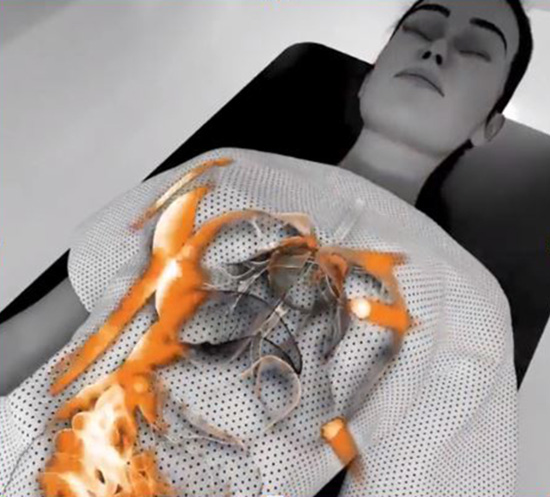New Technology at John Theurer Cancer Center Designed to Target Multiple Tumors
July 12, 2022

John Theurer Cancer Center at Hackensack University Medical Center will be the first in New Jersey, and one of just five cancer programs - across the globe - to offer one of the most advanced radiation therapy systems for treating cancer patients. RefleXion®X1 is the world’s first machine to offer biology-guided radiotherapy (BgRT*) that may improve treatment and expand options for patients with metastatic disease, where few treatments are currently available.
RefleXion’s BgRT, under review with the U.S. Food & Drug Administration, which you can see here, combines PET imaging with stereotactic radiotherapy to allow doctors to detect and respond to signals emitted from the cancer itself, and for the first time, use them to guide immediate treatment.
“This is really a game-changer in cancer treatment and we are so pleased to offer this to our patients in the future, even in some of our most challenging cases,” said Mark D. Sparta, FACHE, President & Chief Hospital Executive, Hackensack University Medical Center and President, North Region, Hackensack Meridian Health. “This technology is so precise, it targets the tumor and may allow for a higher dose of radiation to focus on the cancerous cells while protecting healthier tissue from radiation. Investing in an advanced technology, like this, reaffirms our commitment to providing our patients with the most cutting edge technology available worldwide.”
“The key differentiator with RefleXion’s biology-guided radiotherapy is the continuous live feedback from the tumor itself,” said Andre Goy, M.D., M.S., chairman and executive director of John Theurer Cancer Center at Hackensack University Medical Center. “Real-time BgRT is designed to enable delivery of a tracked radiation dose to multiple tumors in the same session by making the tumors themselves continuously signal their location, it’s incredible.”
As patients move, tumors move too. Even breathing, flexing or involuntary muscle movement can alter the location of a tumor. To account for this tumor motion, current radiotherapy methods require that the entire envelope of a tumor’s motion and uncertainty – which is known as the internal target volume (ITV) – be targeted for radiation.
By tracking the delivery of the radiation dose to the cancer cells live when the radiotherapy is occurring – like a spotlight that follows the tumor – BgRT is designed to eliminate the need for delivering radiation to the entire ITV. Therefore, more healthy tissue in the surrounding organ is spared from injury, resulting in less toxicity for the patient. In turn, this may allow for a higher dose to be delivered to the targeted tumor or may allow some of the radiation dose to be delivered elsewhere at the site of a different tumor.
“It’s a more sophisticated and effective treatment option,” says Chief of Radiation Oncology, Adnan Danish, attending physician at Hackensack Meridian’s John Theurer Cancer Center and Chief of Radiation Oncology at St. Joseph's Health, in partnership with Hackensack Meridian. “BgRT is a departure from current technology, which has required each individual tumor to have its own complicated solution for managing motion and uncertainty. Because of this complexity, going beyond a couple of tumors has not been feasible in most cases.”
The RefleXion X1 is currently approved for treating patients using conventional stereotactic body radiotherapy, intensity modulated radiation therapy and stereotactic radiosurgery. The BgRT feature is expected to receive approval from the U.S. Food and Drug Administration in 2022. The system will be installed at Hackensack University Medical Center in the fall of 2022.